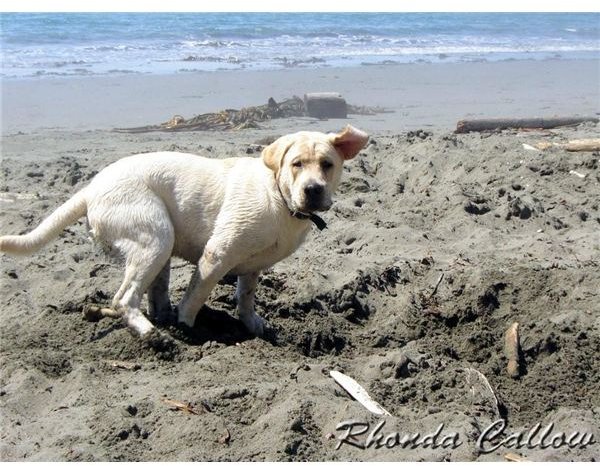Summer Photography - Top 4 Things that will Damage Your Digital Camera
Ahh, summer! Beaches, camping, hiking, sun tanning, swimming…what more could you ask for? Besides these summer activities being amongst the most popular, what else do they have in common? Sand, salt, heat and water - your camera’s worst enemies! Of course, leaving your digital camera at home is out of the question, you want pictures from your summer holiday!
Here are the four things your camera hates and tips and techniques you can take with you this summer to ensure both yourself and your camera have a safe and fun time.
(Click on any image for a larger view)
Your Digital Camera & Sand
It’s probably a given why your camera hates sand; sand can get into all the little nooks and crannies of your digital camera, rendering it useless. Not only can sand ruin the body of your camera, it can also scratch your lenses. So, what can you do to protect your camera from sand?
-
Do not let your camera touch the ground (even if it’s in a camera bag). If you aren’t using your camera, place it on a picnic table, cooler, log or whatever. If you have no other option but to place it on the ground, try to place something under it first, such as a clean towel, plastic bag or extra clothing you’ve brought along.
-
Avoid changing lenses, if at all possible, to decrease the risk of your camera being exposed to sand. If you just got to change your lens to get that perfect shot, take the time to walk away from the sand before doing so. Change the lens in a parking lot, in your car, or even in an outhouse! It only takes one slip of the hand, bump of a mate, or gust of wind to ruin your camera while changing lenses.
-
Camera bags love sand. There’s no point in going through the precautions of protecting your camera from the sand if you don’t do the same for your camera bag. Avoid placing your camera bag on the ground and don’t leave it open. When you get home, make sure to give it a good vacuum.
-
If you don’t already have one, consider purchasing a UV filter. These filters not only absorb ultraviolet rays from the sun to help your photos come out looking clearer and more natural, they also protect your lens. In fact, many photographers shoot with a UV filter on at all times. Compare the cost difference of a filter to a lens, which would you prefer to replace, if need be?
-
If you plan to do a lot of photography on the sand, you may want to think about purchasing either a rain cover or underwater housing for your camera. Though these are designed to protect your camera from water, they will also work to protect your camera from the sand.
-
Placing your camera in a Ziploc bag, or a shower cap (the ones you get for free in hotels) will also help protect your camera. Make a hole for your lens to go through and have the opening of the bag or shower cap for your hands to access the controls. This option works best if you have a lens filter on your camera, since your lens will still be exposed to the sand.
-
For extra protection, store your camera in a sealed Ziploc bag in your camera bag. That way, if sand does get into your bag, you still have an extra layer of protection. Because Ziploc bags can bunch up really small, it’s easy to ensure it never touches the sand – whenever you take your camera out of the Ziploc, simply place it in your pocket immediately.
-
Make sure to pack baby wipes or something similar with you so that if you get sand on your hands, you can clean them off well before reaching for your camera.

Your Digital Camera & Salt
Salt from the ocean damages your camera in pretty much the same way as sand, only it’s much more corrosive. So, all of the tips you learned above can also be applied when at the ocean, even if it’s a rocky beach. Here are a few additional tips to keep in mind when taking photos at the ocean:
-
Don’t hang your camera around your neck after you’ve been swimming in the ocean. Salt will still be present on your bathing suit, which can transfer onto your camera.
-
Using a lens hood can add some additional protection against salt water spray.
-
Wipe your camera and lenses with a damp cloth when you get home to ensure no salt remains on your camera.
-
If you’ve had your hands in the ocean, be sure to wash them with fresh water before picking up your camera.
Please continue on to part two of this series to learn tips on what to do and what NOT to do if the worst happens and you find your digital camera covered in sand.
This post is part of the series: Sand, Salt, Heat & Water - A Digital Camera’s Worst Nightmare!
Summer is a great season to capture some of the best photos. It’s also the time of year when your camera is at great risk of being damaged by sand, salt, heat and water. Learn some helpful tips and suggestions on how to protect your camera from these elements and what to do if the worst does happen.
